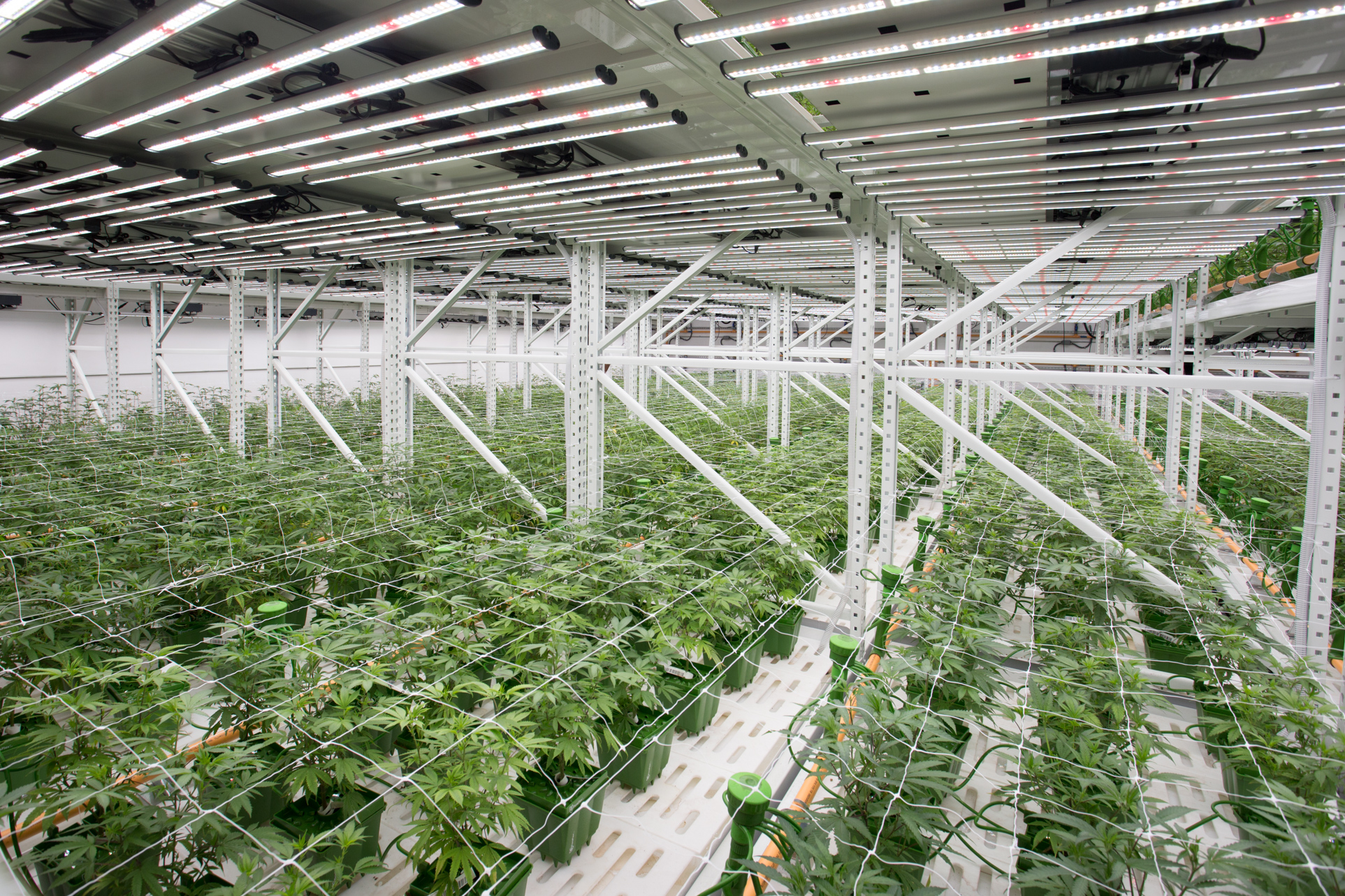To discuss the differences between LED lights and LED grow lights, we first have to explain both light sources in depth. Then we can compare them. In the last blog, we shared some information about LED lights, let’s start with LED grow lights today:
LED Grow Lights
Next, we’ve got grow lights. Plant owners will use grow lights if a plant needs an extra light source besides the sun or if the plant cannot get access to the sun for any reason. For instance, maybe you grow a plant at work and you’re in a cubicle.
Grow lights, although artificial, try to mimic the sun as naturally as possible. In doing this, you typically have a varied light spectrum available for your grow lights. Besides the color spectrum, it’s also possible to have control over the color temperature and the luminous efficacy with grow lights.
What is all that? Good question. Color temperature is a means of defining different light colors and feels. It’s always represented in Kelvin or K. The lowest light temperature is 1,000K and the highest 10,000K. A warm white color has between 2,000K and 3,000K, a cool white is 3,100K to 4,500K, and a blueish daylight tint is 4,600K to 6,500K.
As for luminous efficacy, this refers to the quality of visible light you get from a particular light source. Often, you’ll see luminous efficacy expressed in lumens per watt. Our eyes have a spectral sensitivity that does not necessarily let us see every light wavelength, hence why it’s important to measure luminous efficacy.
The Differences
Now that we’ve gone into detailed explanations of both LED lights and LED grow lights, what’s the differences between them?
- Illumination purposes: LED lights are solely used for providing illumination in a residential or commercial sphere. LED grow lights encourage plant growth.
- Light variety: You can select from a variety of grow lights that suit your budget and needs. These include HIDs, fluorescents, incandescents, and, of course, LEDs.
- Colors available: Here’s what we covered in the intro. Normal LEDs do have a color spectrum, but it may not be as comprehensive as that of grow lights. For instance, LED grow lights need both blue and red light spectrums. The blue allows your plant to experience vegetative growth while the red can promote flowering.
While regular LEDs are great to have at home since they last practically forever and can save you money, don’t get it confused. LED lights are not the same as LED grow lights. If you’re providing a light source for your plant, a grow light will ensure they reach their full potential. That’s not to say you can’t use an LED or another non-grow light source, but grow lights work better.
Which Grow Light Should You Choose for Your Plants?
That brings us to the question of which grow light works best. We’ve already mentioned your grow light options. Is one better than the other? To answer that, let’s look at those other grow light sources and compare them to LED grow lights.
HIDs
HID lights include both metal halide and high-pressure sodium lights. While many plant owners prefer HID grow lights over other types, LED grow lights outshine them in terms of efficiency. Not only that, but HIDs don’t last as long, only about 10,000 hours. Don’t get us wrong; that’s still impressive, but it’s not as long a life as LEDs.
Also, while LED lights have their own heat control system, HIDs do not. To prevent them from getting too warm, you’ll probably need a cooling system in place. This is quite a costly investment.
Fluorescents
T5 fluorescent bulbs don’t give off as much heat as HIDs, but LEDs still manage heat better.
Incandescents
Last but certainly not least, we’ve got incandescent bulbs. Unlike fluorescents, these haven’t changed much in recent decades. The cheapest bulbs around, incandescent lights give off tons of heat, provide light in all directions, and burn out fast. They also suck up a lot of energy. You’re better off using any other type of grow light over incandescents.

